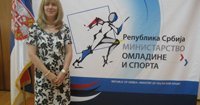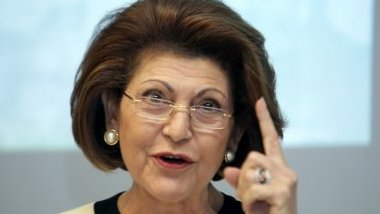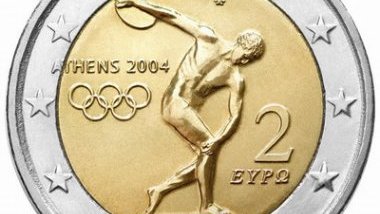1. Could you tell us a little bit more about sport organisation in your country?
SSM: Physical education and sport are very important components of state policy. In fact they are included in the Constitution of the Republic of Serbia. There are three laws on the subject of sport: the Law on Sport, the Law on the Prevention of spectator violence and misbehaviour at sports events and the Law on the Prevention of doping. A new Law is going through the adoption procedure.
The Ministry of Youth and Sport deals with those aspects of sport for which the state is responsible for: the development and improvement of sport and physical education, the implementation of the national sport policy and national sport development strategy, the carrying out and following up of the implementation of action plans and programmes, the building and maintenance of sports facilities and infrastructure, the development of international co-operation in the field of sport.
Sport organisations in Serbia are divided in three types: sport clubs, sport associations and sport societies. Our country has chosen to entrust the main part of the power on physical activities and sports management to the Ministry of Youth and Sport, the Sport Association and the national Olympic committee.
2. How is Ministry involved in international co-operation on sports? In your opinion, which are the main challenges for sport policies in Europe today?
SSM: It is important to note that one of the Ministry of Youth and Sports “mission” is to take part in the development of international cooperation in sport. As such, we are members of the Enlarged Partial Agreement on Sport, a platform for intergovernmental sports co-operation within the framework of the Council of Europe.
The main challenge for sport policies in Europe today is to protect sport from bad influences.
In my opinion, the main challenge for sport policies in Europe today is to protect sport from bad influences such as violence, use of doping. Sport ethics and autonomy in sport movement are a very important base for making sport better in the future. I indicated very often “the autonomy of the sports movement” in my public appearances, but I plead for structured autonomy of sports movement. It is not possible to achieve an absolutely independent sport sector, because of the tax payers financing of sport organisations.
3. Tennis players such as Novak Djokovic or Ana Ivanovic and great football players such as Nemanja Vidic or Dejan Stankovic are somehow ambassadors of Serbia throughout the world. What does sport represent for Serbian people? Could it be a motor of a common identity?
SSM: Of course, sport is the best model for common identity anywhere and I sincerely believe that sport connects people around the world. Our sportsmen and sportswomen are a great example of that. It is a huge pleasure when you can see your flag and hear your national hymn at an important championship or when you are abroad, and people know the country from which you are coming from by the names of famous athletes and their success.
Sport connects people around the world.
The names you mentioned are the names of the best Serbian ambassadors. Starting with sports men and women, I hope, Europe will be prepared to receive us with open heart and give us the opportunity to show all the fields on which we are good.
4. This issue deals with the relation of sport and the media. How is sport media coverage organised in Serbia? How can public authorities play a role without interfering with the freedom of press?
SSM: The connection of sport and media in the Republic of Serbia is very strong. Sport journalists are organised in the Serbian association of sport journalists. They follow all the sport competitions and report about it. We consider them very important; we even decided to invite their representative to a National Council on preventing violence and misbehaviour in sport and at the Council for Sport. They made a research last year, named “Media, Violence, Sport” in which they determined the frequency of showing violence on sport events in media. They proposed, and the National Council accepted to suggest to all the media to limit the showing of violent scenes in media to 3 seconds. It is a great example of this relation.




Follow the comments: |
|
